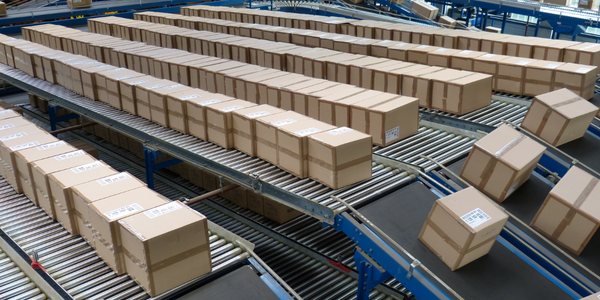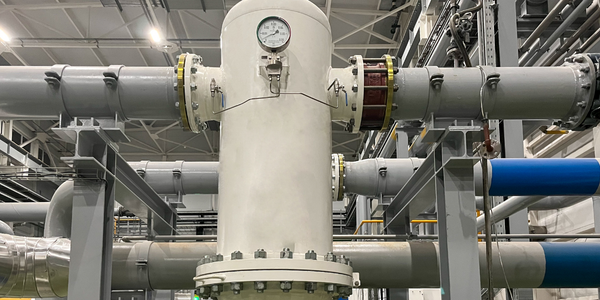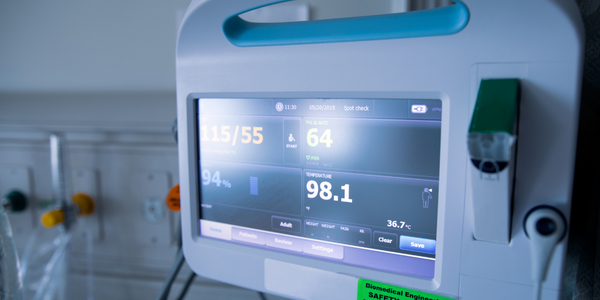Improved Collaboration Through the Visibility of BluJay’s Transportation Management
公司规模
Large Corporate
地区
- America
国家
- United States
产品
- BluJay’s Transportation Management
技术栈
- SaaS
实施规模
- Enterprise-wide Deployment
影响指标
- Cost Savings
- Customer Satisfaction
- Productivity Improvements
技术
- 功能应用 - 运输管理系统 (TMS)
适用行业
- 包装
适用功能
- 物流运输
用例
- 车队管理
- 过程控制与优化
- 供应链可见性(SCV)
服务
- 软件设计与工程服务
- 系统集成
关于客户
AEP Industries is a large manufacturer of plastic packaging, films, and one of the largest US manufacturers of stretch film. The company produces over 15,000 types of multi-purpose packaging and other films for a variety of industries, including deli meat bags, cereal bags, consumer trash bags, and stretch wrap for industrial use. AEP is growing by doubling in size every four years for the last 15 years through acquisition and new market opportunities. From a transportation perspective, AEP has a centralized logistics management approach with 12 distribution centers that ship approximately 1.4 billion pounds of freight annually while managing millions of pounds of vendor pickup and return-related inbound shipments. AEP has 2,500 employees, and 250 of those are in the logistics, warehousing, and transportation division.
挑战
With growth through mergers, acquisitions, and global expansion, transportation became increasingly complex for AEP. The company added multiple new product lines servicing both regional and long-distance markets in North America. The tremendous growth for AEP created challenges with logistics processes, which provided disconnects and missed opportunities. AEP had outgrown the returns process; service to internal and external customers was suffering, transportation costs were escalating, and increased visibility into freight movements was defined as a major opportunity. AEP established a list of goals for the transportation system and services: Bring transportation management in-house, Utilize a SaaS platform, Increase visibility with customers, Improve operational efficiencies and savings, Enable new modes of transportation.
解决方案
AEP decided to gain tighter control of logistics processes by bringing the management of transportation in-house utilizing SaaS-based technology. BluJay’s Transportation Management provides the best return on investment option with low up-front cost and fast implementation. Fast ROI was a driving factor since Transportation Management implementations typically take 10 to 12 weeks with a lower implementation fee and a “pay as you go” model. This allows AEP to attain ROI and savings much faster than with an installed or hosted TMS software purchase. AEP gains flexibility and efficiency with BluJay’s Transportation Management technology to automate and manage day-to-day transportation. AEP can now collaborate with carriers, customers, and operation facilities, so everyone works from the same platform with complete visibility into shipment status. With the scalable nature of Transportation Management, AEP is able to quickly onboard carriers and get new facilities running sooner. Through better visibility and metrics, AEP attracts a better carrier base and increases the number of carriers while still maintaining cost. With detailed knowledge of carrier metrics, AEP easily identifies suitable new carriers while utilizing their core carrier base.
运营影响
数量效益

Case Study missing?
Start adding your own!
Register with your work email and create a new case study profile for your business.
相关案例.

Case Study
IoT Data Analytics Case Study - Packaging Films Manufacturer
The company manufactures packaging films on made to order or configure to order basis. Every order has a different set of requirements from the product characteristics perspective and hence requires machine’s settings to be adjusted accordingly. If the film quality does not meet the required standards, the degraded quality impacts customer delivery causes customer dissatisfaction and results in lower margins. The biggest challenge was to identify the real root cause and devise a remedy for that.

Case Study
Zenon the Ideal Basis for An Ergonomic HMI
KHS develops and produces machines and equipment for filling and packaging in the drinks industry. Because drinks manufacturing, filling and packaging consist of a number of highly complex processes, the user-friendly and intuitive operation of equipment is increasingly gaining in significance. In order to design these processes as simple as possible for the user, KHS decided to introduce a uniform, transparent and standardized solution to the company. The HMI interface should meet the requirement for people with different qualifications and enable them to work on a standard platform.

Case Study
Sparks Dynamics Assists Atlas Container Secure a $15,000 BGE Energy Rebate
The ReMASTER Compressed Air Monitoring system was installed in 2015. This system is capable of monitoring compressed air system parameters on a continuous basis and transferring that information to a cloud server which can be accessed by Atlas Container personnel, Industrial Diagnostics and Sparks Dynamics. This information was collected into a database which can be exported to an Excel spreadsheet or displayed graphically using Sparks Dynamics ViewMaster Software. The average annual compressed air electricity expense was estimated to be approximately $116,000. This is based on an incremental $/KWh electric rate of $.091 per KWh and an estimated compressed air energy consumption of 1,279,200 KWH. The implementation phase of Energy Conservation Measures (ECMs) for the Compressed Air System included: • Identification and repair of compressed air leaks • Understanding of compressed air usage per manufacturing machine and installation of shut off valves when the machines are no longer in production mode • Identification of misapplications of compressed air to include blow offs, venturis, and cooling scenarios • Understand system pressure requirements and potential installation of point of use pressure regulation.

Case Study
Automated Pallet Labeling Solution for SPR Packaging
SPR Packaging, an American supplier of packaging solutions, was in search of an automated pallet labeling solution that could meet their immediate and future needs. They aimed to equip their lines with automatic printer applicators, but also required a solution that could interface with their accounting software. The challenge was to find a system that could read a 2D code on pallets at the stretch wrapper, track the pallet, and flag any pallets with unread barcodes for inspection. The pallets could be single or double stacked, and the system needed to be able to differentiate between the two. SPR Packaging sought a system integrator with extensive experience in advanced printing and tracking solutions to provide a complete traceability system.

Case Study
Mondi Implements Statistics-Based Health Monitoring and Predictive Maintenance
The extrusion and other machines at Mondi’s plant are large and complex, measuring up to 50 meters long and 15 meters high. Each machine is controlled by up to five programmable logic controllers (PLCs), which log temperature, pressure, velocity, and other performance parameters from the machine’s sensors. Each machine records 300–400 parameter values every minute, generating 7 gigabytes of data daily.Mondi faced several challenges in using this data for predictive maintenance. First, the plant personnel had limited experience with statistical analysis and machine learning. They needed to evaluate a variety of machine learning approaches to identify which produced the most accurate results for their data. They also needed to develop an application that presented the results clearly and immediately to machine operators. Lastly, they needed to package this application for continuous use in a production environment.

Case Study
Industry 4.0 at ALPLA: Enhancing Factory Efficiency with IoT
ALPLA, a global leader in packaging solutions, faced several challenges as the complexity of their production machinery increased. The need for highly trained specialists in each factory led to higher personnel costs, difficulties in recruiting experienced talent at each location, and costly personnel turnover. Furthermore, less experienced operators running the machines sub-optimally impacted resource consumption and overall equipment effectiveness (OEE). ALPLA also faced the challenge of monitoring visual inspection systems in every line of their plants, which was almost impossible to do manually. In 2016, ALPLA decided to use data from the 900 different types of embedded sensors in each factory to address these issues. However, their initial choice of SQL Server as the data store for the sensor data proved inadequate, as it was unable to cope with their data requirements.


